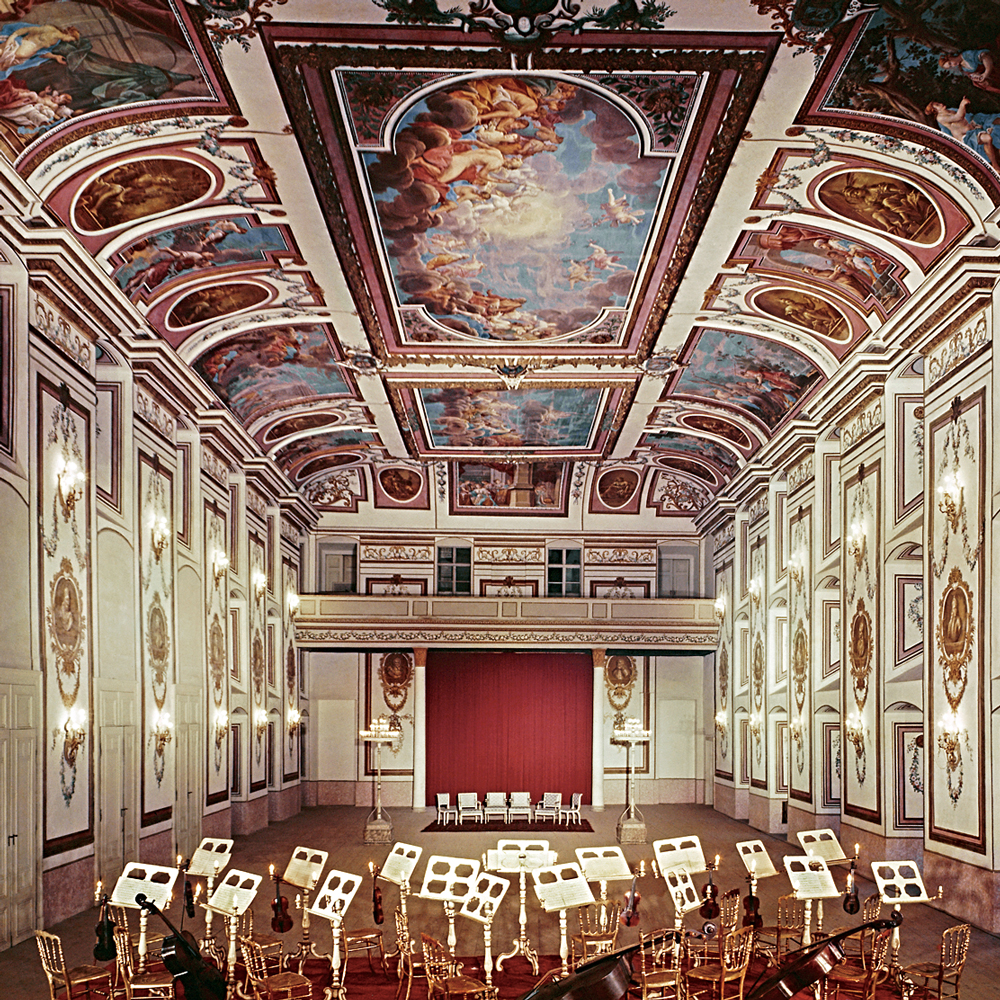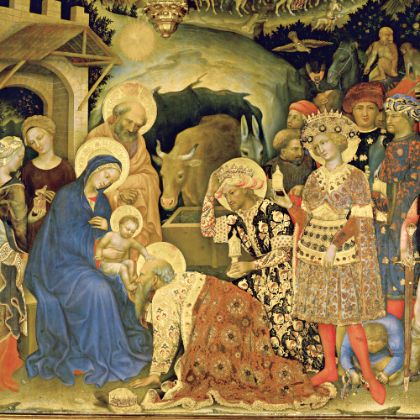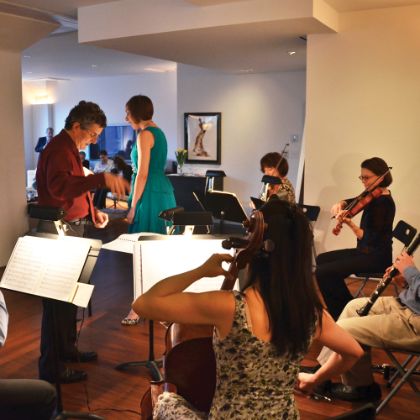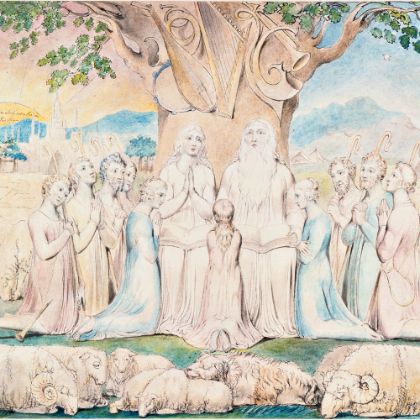Celebrating Haydn
By David Hurwitz
On the occasion of his seventy-fourth birthday in 1806, Joseph Haydn reportedly remarked: “My calling has no limits; what may yet be done in music is far greater than what has already been done.” It’s a fitting comment from music’s greatest innovator. Haydn was born in 1732, the son of a wheelwright living on the Austro-Hungarian border, and he died in Vienna in 1809. At the time of his death he was Europe’s most beloved composer. He had been Mozart’s best friend and Beethoven’s teacher. Bach and Handel were still alive when Haydn began writing music, but the Baroque period was waning. A more dynamic style based on the lively and tuneful musical language of Italian comic opera would soon characterize what we now call the Classical period, in a true musical revolution led by Haydn himself. At the end of his life Romanticism was in the air, yet Haydn was still, amazingly, at the forefront of the latest musical developments.
In his instrumental works Haydn enlarged the expressive scope of music to include not just happiness and sadness in varying degrees, but also humor, irony, desolation, ambivalence — the entire gamut of emotional expression. His “Farewell” Symphony (No. 45) remains one of the most turbulent, disturbing and ultimately wistful pieces in the form. It is the only symphony in the unusual key of F-sharp minor written in the entire eighteenth century, and the only orchestral work of note in that key written before the twentieth century. I say this not to make a tedious academic point, but to suggest that Haydn’s method for expanding music’s range of emotion and contrast occurred in tandem with a new approach to form, instrumental color and texture. His music isn’t necessarily longer than a lot of previous Baroque music, but it’s incomparably more diverse, dramatic and action-packed.
While Haydn wrote a great deal of superb vocal music — his late oratorios The Creation and The Seasons remain perennial favorites — his fame rests primarily on his instrumental music, as “the father of the symphony” and the “inventor” of the string quartet. The fact is that both of these genres existed before Haydn came along, but until he got his hands on them, they didn’t matter. After Haydn, the symphony became a feature concert attraction, a showpiece for the entire orchestra, and the string quartet found its niche as the vehicle for the most profound and intimate expression yet achieved in instrumental music. Absent Haydn’s achievement, the entire subsequent history of orchestral and chamber music would have been very different. He also left us similarly extraordinary, if less frequently cited, bodies of work in two other fields: piano solo (sonatas and variations) and piano trios.
You may well wonder exactly what Haydn discovered that made his music so different from what had come before. The answer is simple, and certainly easy to hear, but not that simple to explain. It involves a uniquely musical quality (that branch of harmony called “tonality,” or more commonly “key”) that Haydn used as the organizing principal of a large instrumental work — what later became known as “sonata form.” This latter term, the bane of so many music appreciation classes, in Haydn’s hands really means turning a piece of music into a related series of dramatic events moving through time as you listen. In other words, in Haydn’s music, “stuff happens.” His themes have specific personalities or characteristics that we can hear change, evolve and interact over the course of a movement or entire work. And because we remember these tunes (they are often amazingly catchy and distinctive), we care about them, and get drawn into the story that the music is telling.
The difference between this type of writing and that of the preceding Baroque period is quite striking. Baroque music tends to explore one basic emotion, or “affect,” at a time. In a Baroque opera, for example, the action takes place in quick recitation, after which everything stops dead in its tracks while the singer expresses his or her feelings in an aria. These tend to fall into several basic types, expressing distinct states of mind such as love, vengeance, despair, heroism, sadness, or triumph, and so specific are they to each general emotional state that they are basically interchangeable from one opera to another. It was not unusual for singers to carry along, say, a trademark “vengeance” number and stick it into whatever production they happened to be appearing in at the appropriate spot.
During the Classical period, this began to change. The greatest opera composer of the day, as Haydn repeatedly told anyone who would listen, was Mozart, and it is unthinkable to take an aria from The Marriage of Figaro and give it to one of the characters in Don Giovanni. This is because each character is a fully developed personality, with a distinctive musical language, instrumental coloration and range of feelings that change and develop in reaction to the dramatic situation. Haydn’s genius led him to find a way to apply this idea to instrumental music. His symphonies, quartets, trios and sonatas have imaginary “plots”; his themes are the “characters”; and once you understand this you can follow along and form your own view of what happens as the music proceeds. But the important thing to keep in mind is that each movement shows a whole range of contrasting feelings and seldom restricts itself to just one.
Perhaps the easiest way to hear this is to focus briefly on one of Haydn’s most famous pieces, the second movement of his “Surprise” Symphony (No. 94). This is the movement that actually contains the “surprise,” a loud crash for full orchestra that interrupts the very quiet tune. Formally, this movement is a “theme and variations.” The theme is as simple and memorable as can be, a children’s tune closely related to “Twinkle, Twinkle Little Star,” and Haydn’s intention is to make his theme express a whole range of feelings while always remaining clearly identifiable as a unique character in its own right. You may well come up with your own list, but in the variations that follow I hear shyness, anger (alternating with calm), smugness, heroism and finally nostalgia.
Now contrast this with one of the great Baroque works in the same form: Bach’s famous Goldberg Variations. Bach’s piece begins with a lovely and highly ornate aria, but this tune plays no part whatsoever in the variations that follow. Rather, each variation is an independent piece constructed not from the aria’s melody, but from its accompanying bass line. Bach maintains the work’s overall unity as a set of variations by this method, but on a more or less unconscious level, since he doesn’t expect you to pay attention to the bass line. It’s the melody on top that always counts, and each variation requires a new theme specific to the feeling being expressed. This couldn’t be more different from Haydn’s approach, in which the same tune, and the simplest possible one at that, reveals new depths of emotion with each succeeding variation.
There’s so much more to Haydn than the common stereotype of the jolly old ‘Papa.’
Treating themes in this manner is what musicologists mean when they speak of “development” or the “development section” in symphonic and chamber music from Haydn’s day forward. Although the term couldn’t be drier and less alluring, it really represents making tunes express a wide range of feelings in response to the dramatic events that they encounter over the course of a movement. Haydn’s discovery of this technique, and his use of it in his orchestral and chamber works, put abstract music on the same footing in terms of importance as vocal music because in his hands it achieves a similar expressive depth and specificity. And this, by any measure, was a true musical revolution, something that had never been done before.
Still, even this stupendous achievement didn’t prevent Haydn’s reputation from suffering a steep decline in the years immediately following his death, partly because of a change in taste, partly because he was derided as a servant of the nobility rather than a Romantic “artist hero,” and partly because the lack of availability in print of much of his instrumental music made him look like a mere precursor to Beethoven in many of the same genres. Understanding his achievement and enjoying it for its own sake has been a slow process that is still ongoing, and rather than giving you just another list of the most popular pieces, I’d like to isolate a few expressive characteristics that make Haydn’s music special and point out where you can readily find them.
The first of these characteristics is his music’s spiritual quality. Always devoutly religious, Haydn’s principal instrumental vehicle for this kind of music was the symphonic adagio (very slow movement), which he basically invented. You can find particularly noteworthy examples in Symphony No. 86 and the String Quartet Op. 76, No. 6, marked “Capriccio” and “Fantasia,” respectively. This is “cosmic” music, alternately serene and mysterious, but with passionate outbursts as well, and it leads directly to the famous “Representation of Chaos” that introduces The Creation. Beethoven took up the challenge of writing this kind of music only in his Ninth Symphony and the late string quartets and piano sonatas; Mozart not at all. Haydn was its first master.
Additionally, despite his well-deserved reputation as a musical jokester in such works as the “Surprise” Symphony (No. 94), the scatological and hilariously funny bassoon belch in the slow movement of the preceding Symphony No. 93, the schizophrenic first movement of Symphony No. 80, or the finale of the aptly named “Joke” String Quartet (Op. 33, No. 2 in E flat major), Haydn also had a “personal minor” key that he used to express uniquely intense feelings of despair, loneliness and abandonment. The key in question is F minor, and the best clue to its emotional message can be found in the central piece of the remarkable series of slow movements The Seven Last Words of Christ on the Cross, where Haydn chooses this key to represent the cry “My God, My God, why hast Thou forsaken me?” This same F minor colors one of the most intense of his middle-period, “Sturm und Drang” (“Storm and Stress”) symphonies, No. 49, “La passione,” and he also chose it for one of his very greatest (and last) piano works: the Andante with Variations in F minor.
In short, there’s so much more to Haydn than the common stereotype of the jolly old “Papa,” churning out cute and charming but cookie-cutter symphonies and string quartets. In fact, he never repeats himself. There really is no such thing as bad Haydn, if by that we mean anything dull or second-rate. If you take the time to dip into the hundred and seven symphonies, sixty-eight string quartets, forty-odd piano trios or sixty-odd piano sonatas, there’s little doubt that you will be astonished at the expressive range, formal variety and consistently high level of inspiration that you will find.
Startling Overtures
 Finding “unsung” Haydn is both easy and difficult; easy because there are hundreds of terrific works that are all but unknown today, difficult because there’s so much great music that it’s almost impossible to choose. Happily, Sweden’s BIS label comes to the rescue with Haydn’s complete overtures — twenty-two of them — fabulously played and brilliantly recorded. Not all of this music is unknown. The overture to the late oratorio The Creation, subtitled “The Representation of Chaos,” is one of Haydn’s most radical and celebrated efforts. Similarly, the overture to the opera La fedeltá premiata (“Fidelity Rewarded”) became one of the composer’s greatest hits as the finale to Symphony No. 73, “The Hunt.”
Finding “unsung” Haydn is both easy and difficult; easy because there are hundreds of terrific works that are all but unknown today, difficult because there’s so much great music that it’s almost impossible to choose. Happily, Sweden’s BIS label comes to the rescue with Haydn’s complete overtures — twenty-two of them — fabulously played and brilliantly recorded. Not all of this music is unknown. The overture to the late oratorio The Creation, subtitled “The Representation of Chaos,” is one of Haydn’s most radical and celebrated efforts. Similarly, the overture to the opera La fedeltá premiata (“Fidelity Rewarded”) became one of the composer’s greatest hits as the finale to Symphony No. 73, “The Hunt.”
Haydn’s operas remain the least well-known, and underestimated, area of his output. And yet he composed several masterpieces in the genre. Not all of these works survive, but happily their overtures do. They generally come in two varieties: pieces in fast–slow–fast form, or single quick movements (with or without slow introductions) that could have come straight from one of the genuine symphonies of their period — and as we’ve already seen, some of them did indeed find a new life in symphonic dress. There are too many wonderful items to list them all: L’incontro improvviso, an opera with the same plot as Mozart’s Abduction from the Seraglio (though composed earlier), features “Turkish” percussion (bass drum, cymbals and triangle), just like Mozart’s opera; L’isola disabitata (“The Deserted Island”) has an unforgettable minor-key tension similar to Haydn’s revolutionary “Sturm und Drang” symphonies.
These pieces cover almost forty years of the most exciting period in musical history. From the early, almost Baroque overture to Acide (1762) through the heartbreaking intensity of the prelude to The Seven Last Words of Jesus Christ on the Cross (1785) to the haunting introduction to “Winter” from Haydn’s last oratorio, The Seasons (1801), you will find it hard to believe that you’re listening to the same composer. Here, then, is a snapshot of some of the most innovative and entertaining music from music’s most innovative and entertaining composer.

Photos: Erich Lessing/Art Resource, NY, The Granger Collection, NY
-

From Christemasse to Carole
The birth of Christmas in medieval England
Read More
By David Vernier -

The Next (Not-So-)Big Thing
New chamber orchestras are popping up all over America.
Read More
By Colin Eatock -

A Father's Lament
Finding solace in the sound of authentic sorrow
Read More
By Rev. Jake Bohstedt Morrill